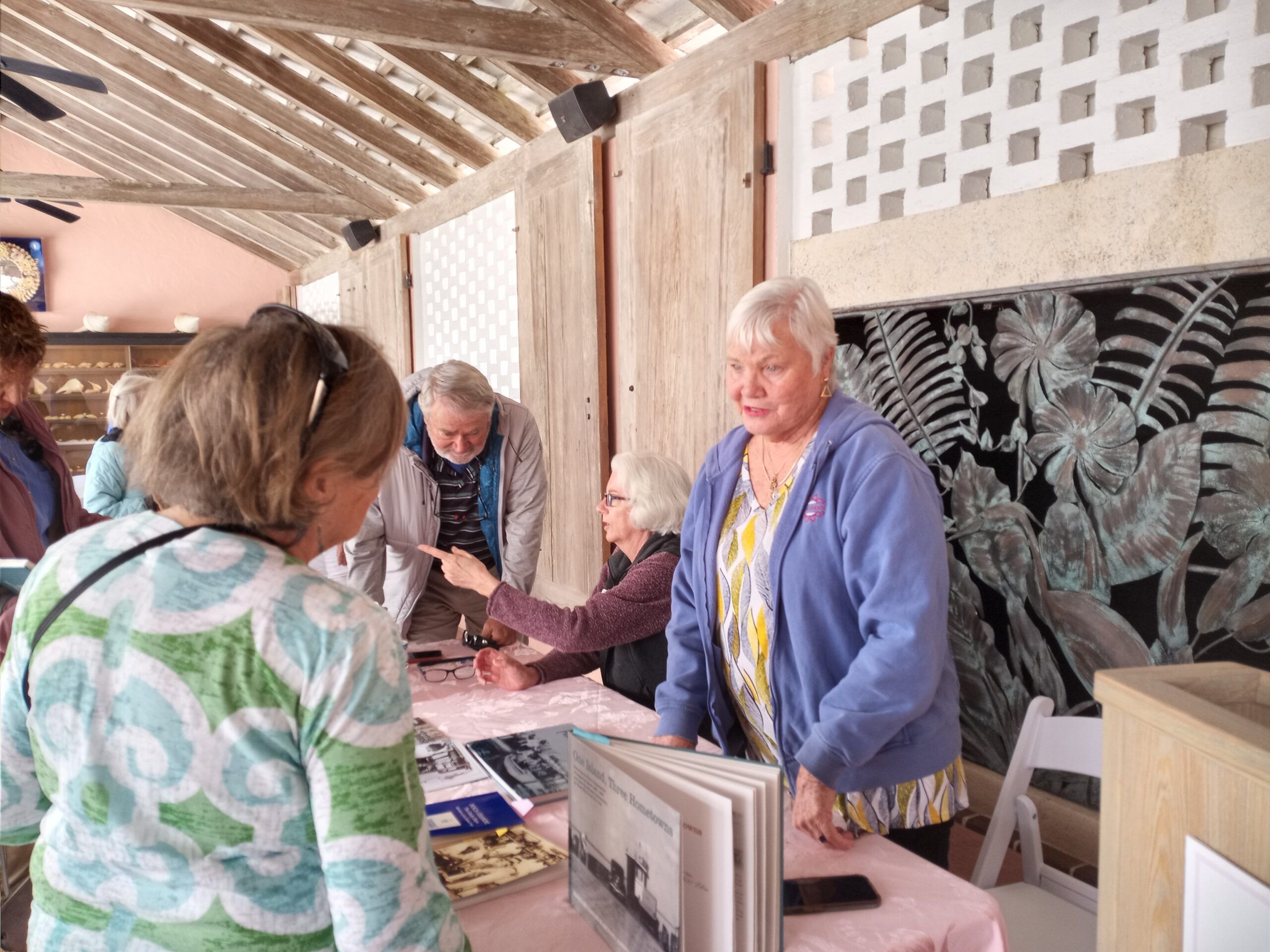
History Bytes looks at book, towns of the island
Despite the chill in the air, close to 100 people showed up for the season’s first History Bytes program at the loggia of the Johann Fust Library. The topic was the History Center’s new exhibit, based on the 2010 book “One Island: Three Hometowns.”
The book and the exhibit include pictures and oral histories sparked by historic photos.
Kim Kyle, one of the book’s three editors, spoke. She was introduced by Betsy Fugate Joiner, a member of several multi-generational families in Boca Grande.
Joiner said the series of History Bytes is dedicated this year to the memory of Robert Johnson, a long-time historian of the island. She said he had been making history, studying it, and loving the island’s history for more than 30 years.
“We miss him greatly,” she said.
Kim thanked everyone involved in the production of the exhibit and book, with special recognition for the other editors, Charles Blanchard and Bob Edic. Jim and Rose Marie Blaha also were given recognition for their continuing archival and educational work. Also recognized were the many people who provided pictures, as well as those who used the photos to call up memories that were then transcribed and published.
“Whether we used their quotes or not, all the stories were important,” Kim noted. She admitted that she wanted to use every story they were told, but they simply could not include everything. “The information in the book is priceless,” she said.
The development of the book took four years, with the three editors often being in various parts of the country, trying to coordinate and confer.
“This was before we had Zoom,” said Kyle. “That would have made things a lot easier.” Working quietly alone during the summers often provided her time to listen to recorded stories and flesh out the book further. Listening to the recordings often sent her “back in time,” she said, letting her vicariously live the adventures the speaker was telling about.
She said the team viewed nearly 2,000 historical photos from the History Center’s archives. Of those, about 400 were selected. Then people with historical ties to the island were asked to review the pictures and recount stories, explaining or elaborating on the pictures.
As the stories were told, the editors realized they were hearing about three distinct parts of the island: the north-end fishing village of Gasparilla, the central business and residential area, and the southern port area. Each one functioned independently, especially in the early days, beginning around 1890 and up until the 1960s.
Bob Edic, one of the editors, said that the book has withstood the test of time. He said one can open to any page in the book and find something funny, interesting or surprising. He said many of these memories would have been lost completely if they had not been recorded.
Several people in attendance Wednesday had questions about surprising stories that surfaced, or the interplay of the three communities on the island. Joiner said the early days were the most segmented, since there were no cars, and each section was self-sufficient. However, with the addition of the bridge in 1958, more unity developed.
For many years, the school was the center of most activity, with dances, dinners and other activities generated for residents of all ages.

